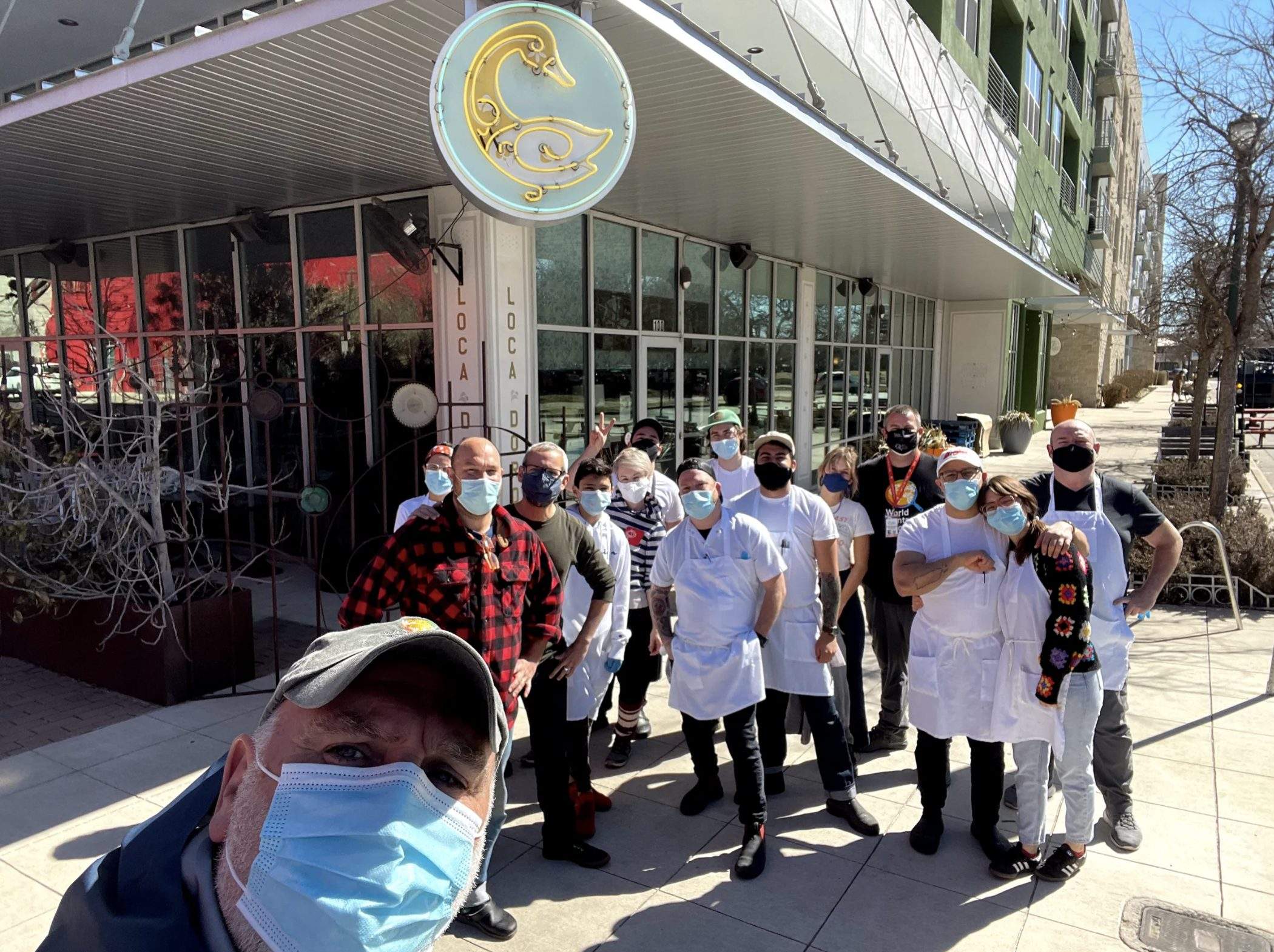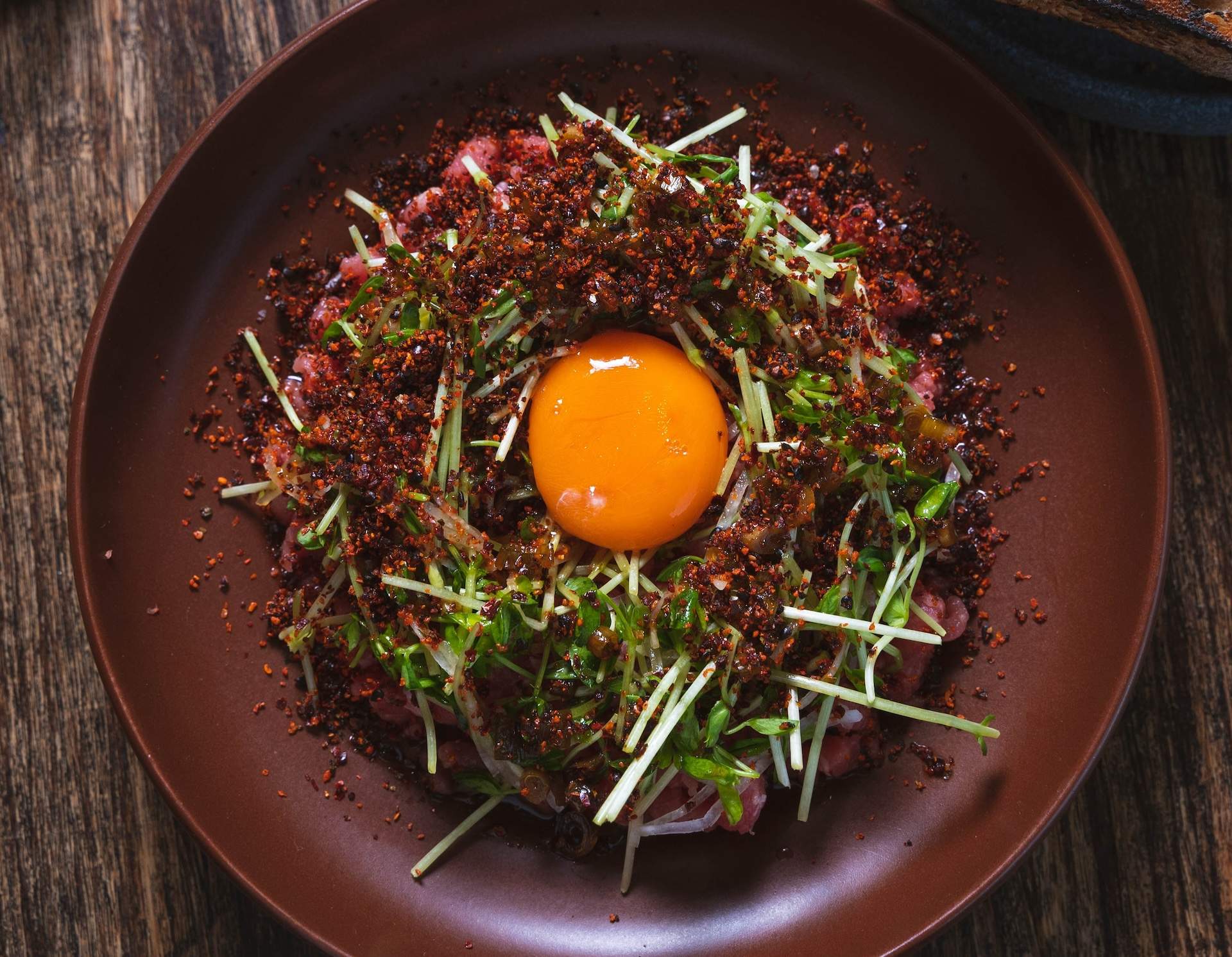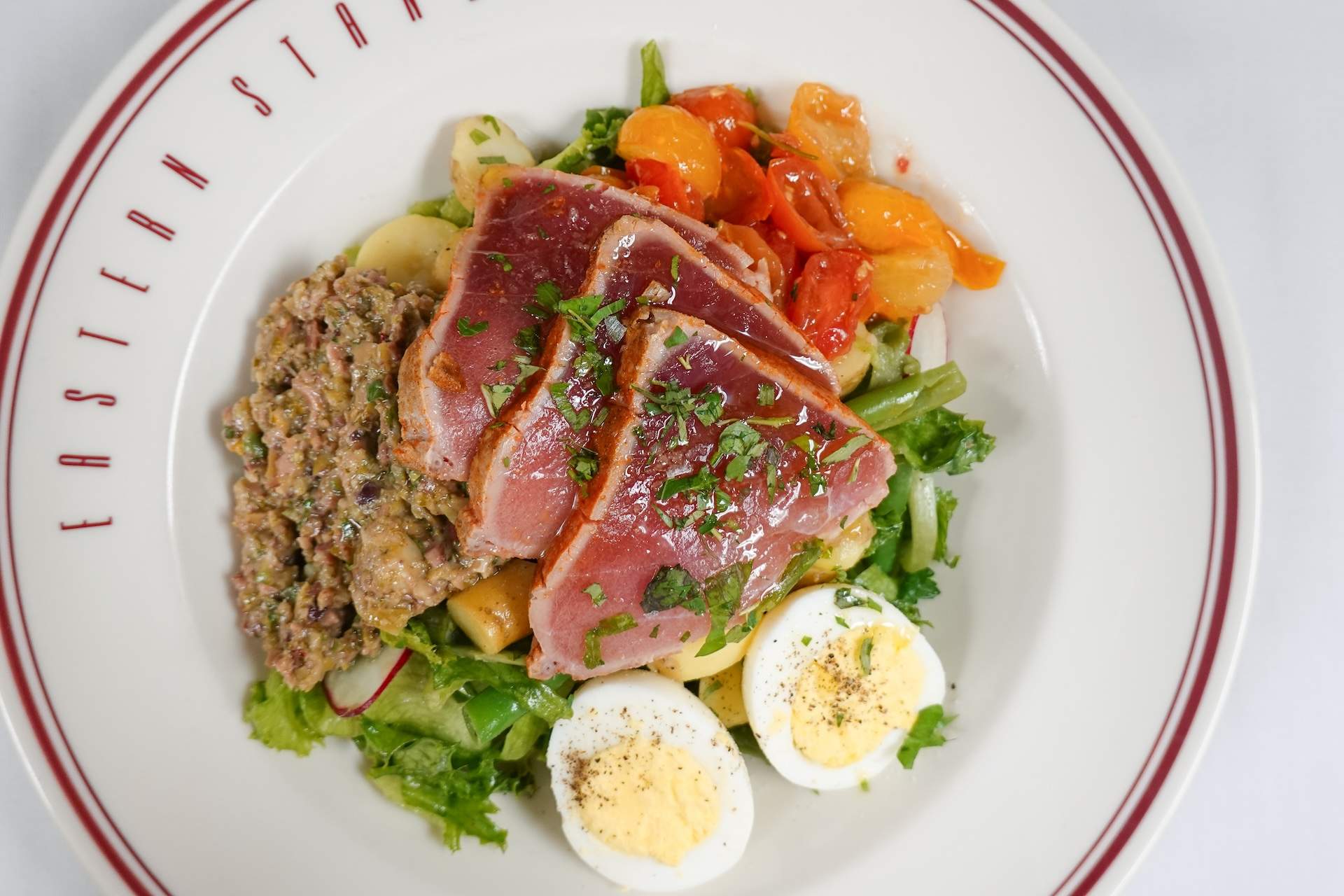Austin’s neighborhood Italian restaurant L’Oca d’Oro opened in 2016 as a place built around regulars, where staff members stayed for the long haul and knew their guests’ orders before they sat down. Owners Adam Orman and Fiore Tedesco had only just reached their stride when COVID-19 hit, and they closed the restaurant exactly one day before the mayor ordered a shutdown. After a final, emotional night––guests spent thousands of dollars on gift cards and expensive wines in an outpouring of support––they let their whole staff go. Orman remembers: “It was one of the most heartbreaking feelings I’ve ever had.”
When the pandemic closed their doors to diners, L’Oca d’Oro opened their kitchen to the community. As public safety and financial realities made running the business impossible, they didn’t give up. Instead, they changed the business. Orman and Tedesco united the local restaurant community, partnered with the city to provide meals for those in need, and mobilized restaurants to help Austinites weather a debilitating winter storm.
“The pandemic freed us up to care about our business in a different way, where we can be a strong leader in food insecurity and workers’ rights,” says Orman. “Those are things that are going to keep L’Oca d’Oro afloat. The money will come.”
Read on for five ways that L’Oca d’Oro reimagined their business, purpose, and possibilities during the COVID-19 crisis––plus lessons other restaurateurs can learn from their path.
1. Band together local restaurants as a community
Along with other local restaurateurs, Orman and Tedesco launched Good Work Austin in the summer of 2019 to provide resources for restaurants that wanted to change their wage models and provide health care and mental health resources for employees. By the time COVID-19 swept the city, they had a 501(c)(3) designation and a mailing list of more than 100 restaurants, which allowed them to organize as a business community with purpose.
The initiative began as a group of small businesses working with the city council to pass a paid sick leave ordinance in Austin. When the ordinance was passed and immediately challenged, the group collaborated through court cases and legislative sessions.
“It was really important to create an employee-friendly business association that realized employers, employees, and the community are not at war with each other––we all really needed to support each other if growth in Austin was going to be sustainable,” says Orman.
For L’Oca d’Oro, that marked the beginning of a true local restaurant community that could influence the city and its neighbors. During the pandemic, that community became even more powerful, as Good Work Austin allocated resources to serve Austin’s food insecure and leveraged an opportunity to change how restaurant businesses operate across the board.
“The pandemic has shown us that things like higher wages and paid sick leave are not just employee benefits, these are community benefits,” says Orman. An association like Good Work Austin helps shift the business culture by making those benefits possible for everyone.
2. Take control of reopening plans
From the beginning of the COVID-19 crisis, L’Oca d’Oro approached reopening with patience and caution, prioritizing the health and safety of their employees and communities.
With Good Work Austin, they established their own set of reopening guidelines to be shared and promoted among the organization’s businesses. The agreements address how to manage guests who don’t follow guidelines, handle employees with symptoms, and distribute menus, among other issues. “We didn’t think the guidelines out there were strict or specific enough,” says Orman.
Even after indoor dining was permitted, L’Oca d’Oro remained closed. “There was still too much we didn’t know, and it was happening too quickly and sloppily,” says Orman. They wanted to resist the roller coaster of openings and closings, for the sake of both their staff and guests. For staff, they couldn’t afford to bring them on and lay them off again, emotionally or financially, Orman explains. “It’s cruel.” And they worried that guest confidence would sink every time they changed service models.
When L’Oca d’Oro does reopen will depend on two factors: public access to vaccines and weather. They will not begin indoor dining until the whole staff has been vaccinated, and they also won’t rush it during the summer, when people are likely to travel. Instead, they will open a 50-seat outdoor dining room this spring, complete with a new parklet and umbrellas.
“We want to do it right,” says Orman. “We can afford to be cautious right now.”
3. Feed neighbors in need
As the pandemic highlighted the needs of food-insecure Austinites, Orman and Tedesco stepped up to help. To start, they advocated that city contracts go to local businesses, rather than national chains, to strengthen the whole community.
L’Oca d’Oro landed its first contract with the local school district in May 2020, which paid $5 a meal for up to 30,000 meals per week. “We already had relationships with the city council and the school district. Fiore said, ‘We’re going to do as much as we can––more than we can,’” Orman remembers.
Since then, the team has prepared between 5,000 and 8,000 meals each week for the program, including dishes like shepherd’s pie, lasagna, and overnight oatmeal. From a business perspective, the effort upends a traditional restaurant model: they make five times the food at 12% of the revenue. Still, Orman says, it works.
From the relationship with the school district came more contracts to feed Austin’s vulnerable residents, spread among the city’s restaurants. Since last spring, a group of 15 to 20 restaurants has distributed more than a million meals to people in need––all while supporting local farms and producers in the meantime.
“Tethering all that together in a totally different environment with a much lower price point seemed impossible up front,” says Tedesco. “I am so proud of how possible it is and how repeatable it is, and how we’ve been able to share and help so many other restaurants and people be a part of this program to make it work.”
4. Think outside the (delivery) box
Like many restaurants last spring, L’Oca d’Oro quickly adopted takeout and delivery after shuttering the dining room, relying on the restaurant’s land line and an answering machine to take orders. They lasted nine days.
“Takeout was ugly,” says Orman. “We had to do all of these things that I didn’t know how to do––to put all our food in boxes that weren’t the right size. We didn’t have any time to figure it out.” Tedesco adds: “We didn’t feel good about it.”
Instead, the team poured effort into preparing to-go dishes and meals they knew they could execute. They partnered with Farmhouse Delivery, an Austin-based Community Supported Agriculture (CSA) delivery program that offers add-ons from restaurants, to sell frozen lasagnas. They also packaged fresh pasta for local restaurants that had transitioned to grocery stores.
Meanwhile, they kept adapting curbside service to find a safe, reliable system they could stand behind. First, preorders offered on a designated pickup day led to better consistency. In the fall, they began subscription meal bags, which Orman describes as a cross between curbside service and meal kits (think green corn polenta with short rib ragu and grilled vegetables). The meals came with prep and heating instructions to finish at home, plus a video from Tedesco.
5. Learn from one crisis to tackle the next
In February 2021, Austin sat at the center of one of the most severe winter storms on record, leaving many residents without heat, power, or access to food and other necessities. As L’Oca d’Oro was already making meals for people all over the city, along with other local restaurants, they were uniquely positioned to help.
Tedesco and Orman had conversations with Austin Public Health and emergency operations, whose sites they were already feeding. When the city activated warming stations and cold weather shelters, a network of restaurants was ready to deploy food where it was needed––and the city knew the restaurants could deliver quickly. World Central Kitchen came in to help, and national support poured throughout Texas. Though their restaurant network is wide through Good Work Austin, Tedesco says, “during the storm we needed so much more. We needed to be 10 times bigger, and we were.”
The solutions they developed during the pandemic allowed them to help in new and meaningful ways. Tedesco adds: “If this was a year ago, we wouldn’t have been able to help. We would have had the capacity to. We wouldn’t have known how.”
For that reason, both Tedesco and Orman are excited about the future of L’Oca d’Oro. “As challenging as it’s been, I’ve never been more motivated and I’ve never been more proud of what we are doing,” says Tedesco. “Our purpose as a restaurant, as an organization, as a community has crystallized a vision and a path forward that we didn’t have before––we didn’t have to have before.”




